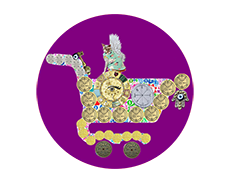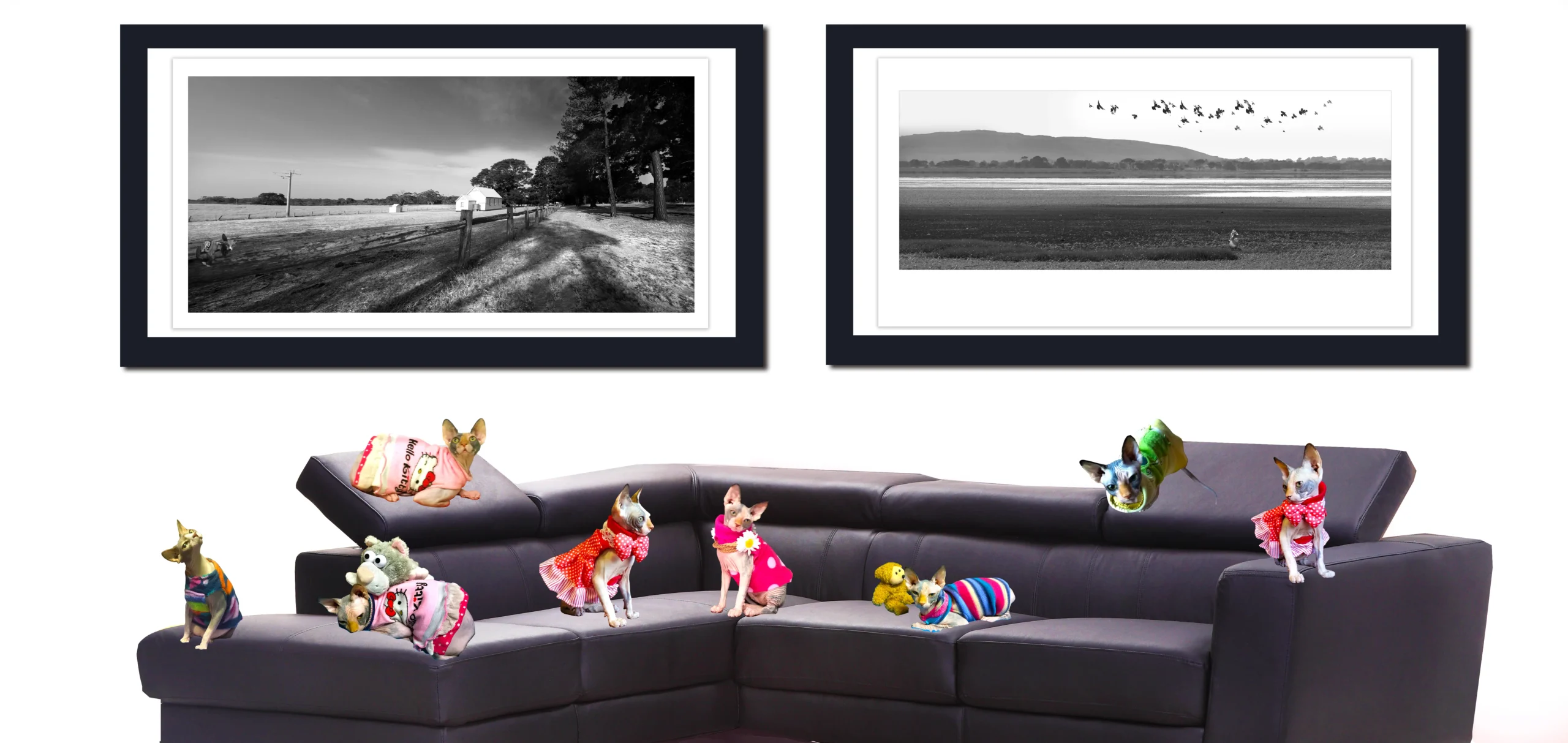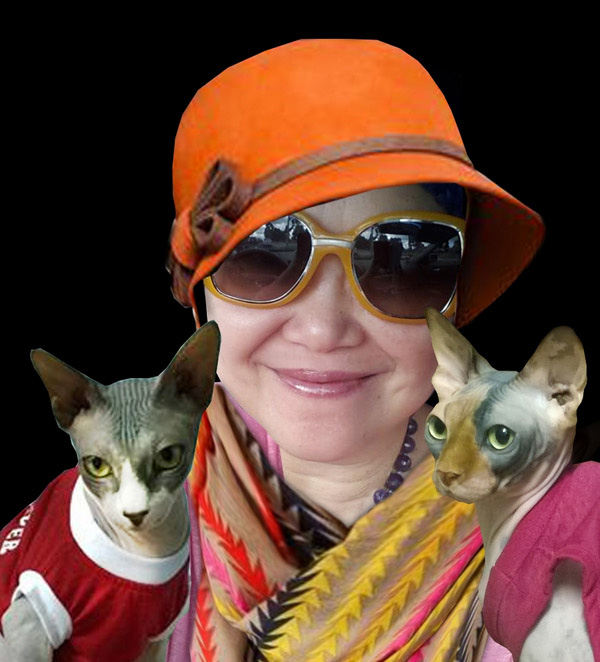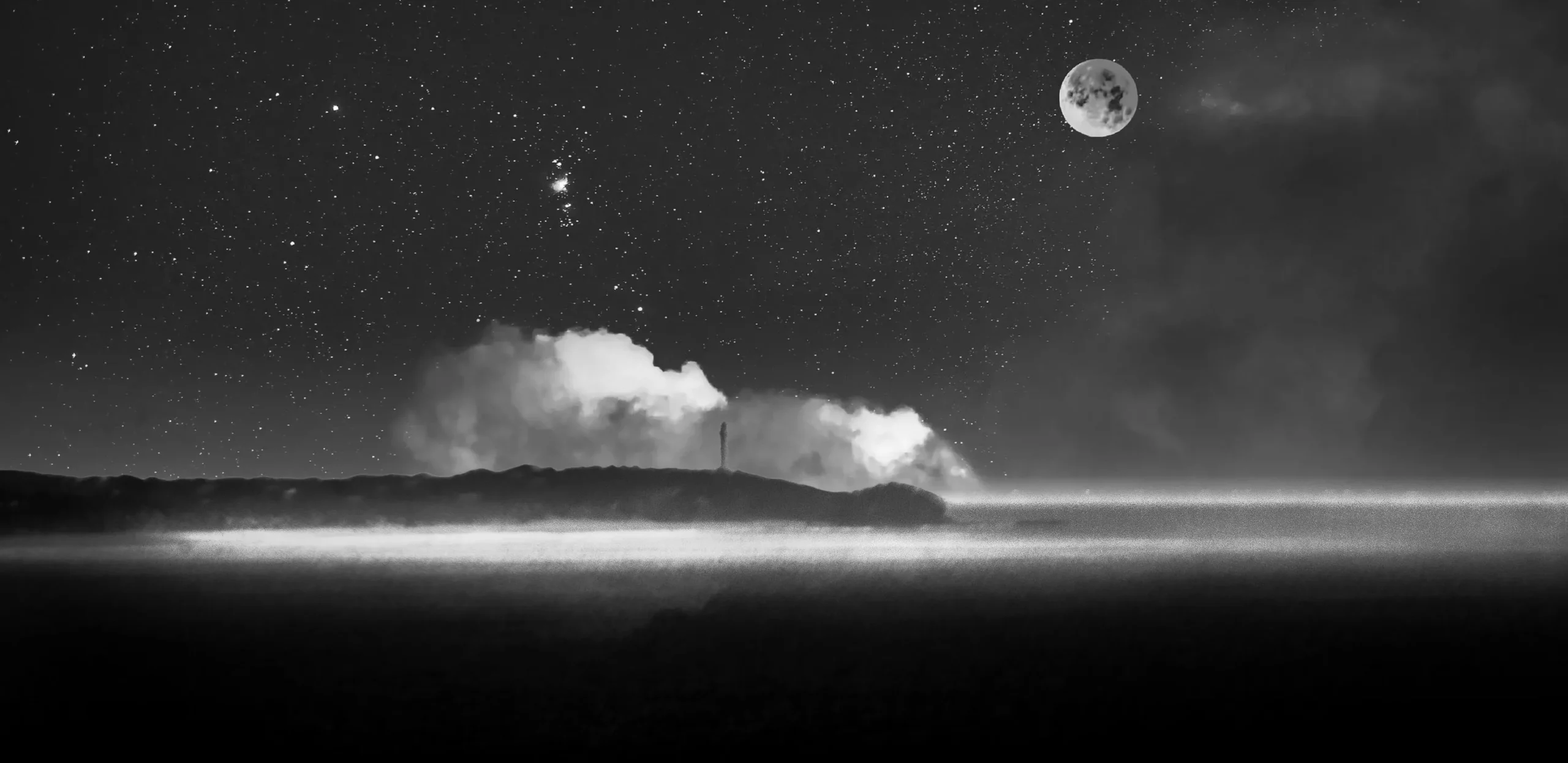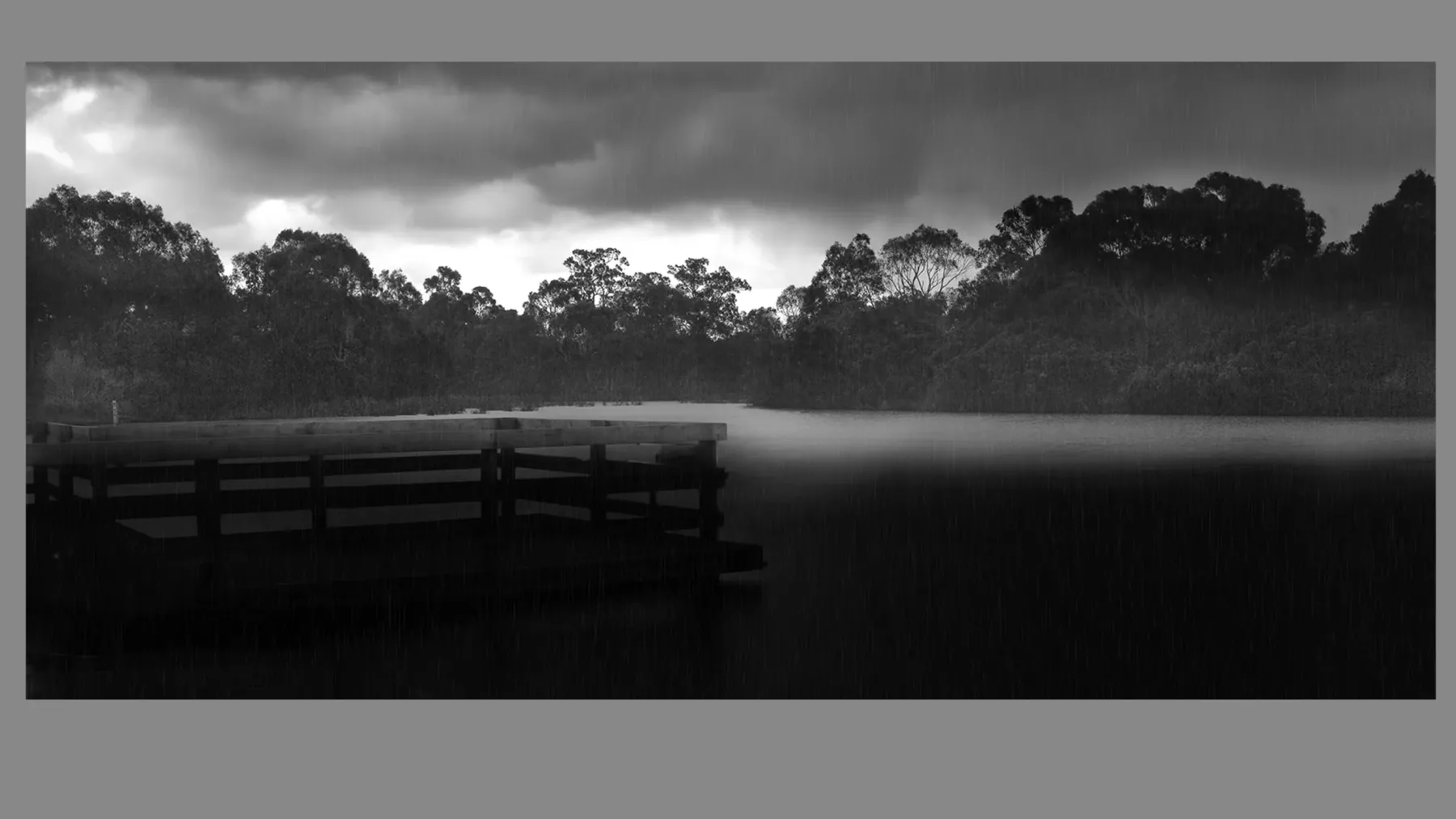Glacier Landing with Dog Sledding adventure Alaska. The ultimate multi activity package: a helicopter tour, a dogsled tour and a landing on the lower glacier to explore the melt pools and crevasses. Glacier Dog Sledding & Helicopter Tour, Glacier Dog Sled Adventure. Depart by helicopter from Knik River Lodge, fly over glaciers and land on a snow field high in the mountains where the dogs and their mushers are waiting for you. Glacier Dog Sled Adventure Drive your sled-dog team on real snow in the middle of summer surrounded by amazing scenery. Alaska Glacier Dogsledding plus Lower Glacier Landing. The mushers welcome you on the glacier and you enjoy a whole hour with Alaskan huskies that live here all summer long. Take the dog team for an exhilarating 2-mile ride through real snow. You can stand on the runners and mush your own dog team if you want, or just sit on the sled and let the mushers run the team.
Dog Sledding Adventure Alaska : Travel Snapshots
Welcome to Travel, Lifestyle, Art & Photography of Dr Zenaidy Castro Blog. The globetrotting Cosmetic Dentist based in Melbourne Australia. See the world from my photographic perspective. I identify myself as a passionate explorer and adventurer at heart, with strong interest in remote places, unique cultures and different lifestyle.
I hope you enjoy exploring my travel blog and inspired by what you see. Through my photos, I hope to encourage others to get out and explore. To not be scared and to be open to new experiences and civilisations. Because, at the end of the day, travel is about finding experiences that change our minds and widen our perspectives in order to create a more inclusive world. Please feel free to browse thru my blog.
Most of the photographs posted on this blog were taken with my mobile phone. I invite you to browse through my SHOP page to see the real fine art photography that I have created while travelling.
______________________________________________________________________________________________
Glacier Landing with Dog Sledding adventure Alaska. The ultimat
Dog sledding in Alaska is a thrilling and deeply rooted adventure that combines an exhilarating outdoor experience with a rich cultural heritage. From its ancient origins as a primary mode of winter transportation to its modern incarnation as an internationally recognized sport and tourist attraction, dog sledding represents one of Alaska’s most iconic and enduring traditions. This comprehensive overview covers the history of dog sledding in Alaska, the breeds involved, the intricacies of training and caring for sled dogs, and how mushers and their canine teams live and work in challenging mountain camp environments.
The Origins and History of Dog Sledding in Alaska
Dog sledding is not merely a recreational activity; it is a centuries-old practice linked to the survival and mobility of indigenous peoples in Arctic and sub-Arctic regions. For thousands of years, native populations such as the Inuit, Athabaskan, and Chukchi peoples depended on sled dogs to execute crucial tasks in harsh winter climates. These dogs were specially bred for endurance, strength, speed, and their ability to withstand bone-chilling temperatures. They were indispensable for hauling goods, traveling long distances, and maintaining connectivity between isolated communities.
When European settlers arrived in Alaska in the late 19th century, they quickly recognized the utility of sled dogs and adopted this mode of transportation. The Alaska Gold Rush of the late 1800s significantly accelerated the demand for reliable sled dog teams, as thousands of prospectors and traders needed to traverse the treacherous, snow-covered landscape. Paths and trails were developed with roadhouses built every 20 miles or so to accommodate teams and drivers, reflecting the importance of the sled dogs in regional travel and commerce.
The early 20th century saw dog sledding become formalized as a sport with the inaugural All Alaska Sweepstakes races. Later, the Iditarod Trail Sled Dog Race rose to prominence. Established in the 1970s to preserve the cultural legacy of dog sledding and honor the role of sled dogs in events like the famous 1925 serum run to Nome, the Iditarod became the ultimate test of mushing endurance and skill, spanning over 1,000 miles of wilderness.
The Sled Dog Breeds of Alaska
The Alaskan Husky is the predominant breed used in dog sledding today. Unlike purebred dogs with fixed breed standards, Alaskan Huskies are bred primarily for performance. Their lineage includes a mix of Siberian Huskies, malamutes, and other working dog breeds selected for qualities such as speed, stamina, cold tolerance, and a strong drive to run and pull. These dogs are leaner and faster than malamutes and larger than Siberian Huskies, creating an ideal blend for long-distance racing and harsh conditions.
Malemutes, with their bulkier frame and thick fur, are more traditional and were widely used during the Gold Rush era primarily for freight hauling due to their strength and endurance. However, for the high-speed endurance racing of today’s sport, Alaskan Huskies dominate because of their superior adaptability and performance traits.
Rearing and Caring for Sled Dogs
Raising sled dogs is a year-round commitment that demands knowledge, dedication, and careful attention to the dogs’ health and well-being. Puppies destined for the sled team are typically raised within the kennel from birth, socialized early with humans and other dogs to develop the necessary temperament for working in groups. Training starts gently at a young age, emphasizing obedience, acclimation to harnesses, and gradual exposure to running.
Nutrition plays a fundamental role in maintaining sled dog health. These working dogs consume high-calorie diets specially formulated to meet the extreme energy demands of sledding. When racing or training at full intensity, a dog’s energy needs can be many times higher than those of the average pet. Diets include a balance of raw meat, fish, fats, and specially designed kibble, ensuring dogs receive adequate protein and fat to fuel long runs through cold, challenging conditions.
Health monitoring is constant. Mushers keenly watch for signs of injury, illness, or fatigue, and provide veterinary care as needed. During training and racing, dogs receive regular paws checks to prevent injury from ice cuts or abrasions. Grooming includes keeping fur free of tangles and mats to maintain insulation properties, and ensuring hydration even in freezing conditions is critical.
Sled dogs also require mental stimulation and social interaction. Living in groups, they form strong social bonds that contribute to team dynamics and motivation. Mushers foster a positive relationship of respect and trust with the dogs, which translates into better cooperation during runs.
Training Sled Dogs
Training sled dogs is a detailed and gradual process, combining physical endurance with obedience and team coordination. Young dogs begin with short runs, gradually increasing distance and intensity to build stamina and muscle strength. They learn how to respond to the musher’s commands, which direct the team to turn, stop, speed up, or slow down. Commands are usually simple and distinct, such as “Hike!” to start running, “Gee!” and “Haw!” to turn right and left, and “Whoa!” to stop.
Dogs train not only to pull weight but also to work in harmony with each other and the musher. They learn to run in lines with specific positions for each dog: lead dogs at the front guide the team, swing dogs behind help steer, team dogs provide the main power, and wheel dogs right behind the sled provide pulling power and assist with maneuvering.
A musher typically handles a team of 8 to 16 dogs, depending on the distances fought and terrain. Training includes teaching teamwork, endurance over rough terrain and steep climbs, and responsiveness under cold weather and potential distractions such as wildlife.
Life in Camp on Top of the Mountain
Dog sledding adventures frequently take mushers and their teams to remote, mountainous regions where conditions can be extreme. Life in a mountain camp during a dog sledding expedition is rugged, structured, and communal, revolving around the care of the dogs and preparation for the next stage of the journey.
The camp itself often consists of tents or small cabins nestled near the trail, with designated areas for the dogs to rest, eat, and socialize. Dogs generally sleep outside in insulated doghouses or straw-lined enclosures, which protect them from the harsh winter elements while allowing them to acclimate naturally to cold weather. Mushers carefully build these doghouses to provide shelter from wind and moisture yet allow ventilation.
Daily routines in camp focus heavily on the dogs. After a long day of mushing, the dogs are fed a hearty meal high in fat and protein. Mushers then inspect each dog’s feet, ensuring that paws are free of cuts, ice buildup, and signs of strain. They groom dogs as needed and bring weaker or injured ones into the tent for warmth and additional care.
Mushers also prepare gear and supplies for the next day, considering weather conditions and trail challenges. Campfires and simple meal preparation for humans create a sense of camaraderie and respite after long hours of exertion.
Despite the harsh conditions, being in a mountain camp is often described by mushers as deeply rewarding. The bond that forms between the musher and dogs in these isolation settings creates an intimate connection with nature and the wilderness. The quiet wilderness nights, punctuated only by the sound of wind and dog barks, bring a special stillness and sense of purpose.
The Physical and Emotional Challenges
Dog sledding in Alaska is physically demanding for both the dogs and the mushers. Covering long distances in extreme cold, over steep mountain passes and frozen rivers, requires stamina, strength, and resilience. Dogs face the risk of injury, frostbite, and exhaustion, and mushers must be vigilant to maintain their team’s health.
Emotionally, mushers develop profound responsibility and affection for their dogs. While the work is challenging, it is also characterized by trust and teamwork. Many mushers consider their dogs as partners, with each dog possessing unique personalities and strengths. This human-animal bond plays a critical role in success and safety.
Modern Dog Sledding Adventure
Today, dog sledding combines traditional mushing with modern tourism and sport. Adventure seekers from around the world come to Alaska to experience dog sledding trips ranging from single-day rides to multi-day expeditions atop snowy mountain trails. These trips provide an immersive experience where participants learn basic mushing skills, help care for the dogs, and witness the breathtaking Alaskan wilderness.
Musher-led tours often include detailed instruction on commands and sled handling. Visitors get hands-on opportunities to drive a dog sled team on groomed trails or backcountry routes, gaining a firsthand sense of the endurance, coordination, and joy it takes to run a dog team.
Beyond tourism, competitive racing remains a vital part of Alaskan culture. Events like the Iditarod and the Yukon Quest test team and musher endurance across hundreds or thousands of miles, often traversing some of the most remote and unforgiving terrain on the planet.
Dog sledding in Alaska is much more than a thrilling winter sport or tourist attraction. It is a living tradition rooted in thousands of years of history and a continuing test of human-animal partnership and endurance. From breeding and raising dogs specially equipped for cold climates to the detailed training that sharpens their skills and teamwork, every element of the experience reflects the harsh yet majestic environment where sled dog culture was born.
Living in mountain camps alongside these remarkable dogs under extreme conditions engenders a unique sense of community, respect for nature, and connection across species. Whether experienced through a multi-day expedition or by following the grueling competition of the Iditarod race, dog sledding offers an authentic window into Alaska’s heart and soul, where resilience, adventure, and respect for tradition run as deep as the snowy trails themselves.
Dog sledding adventure tours in Alaska
Dog sledding adventure tours in Alaska are among the most sought-after winter and summer experiences in the state, offering visitors an authentic taste of the Last Frontier’s hardy, breathtaking wilderness and unique cultural heritage. With a tradition stretching back centuries, dog sledding has become synonymous with Alaskan life, echoing the region’s history, its resilient spirit, and the deep partnership between mushers and their canine teams. For travelers, dog sledding tours provide a rare opportunity not only to race across icy landscapes or lush glacier trails but also to immerse themselves in the intricacies of sled dog life, from training and rearing to living in remote mountain camps.
Below is a comprehensive 5,000-word exploration of Alaskan dog sledding adventure tours—detailing the types of tours available, what visitors can expect, the thrill of the experience, and the behind-the-scenes elements that make these adventures truly special.
The Allure of Alaskan Dog Sledding Tours
Alaska’s dog sledding scene is diverse, offering something for every type of adventure seeker. From luxury helicopter or flightseeing-and-mushing tours to multi-day backcountry expeditions, each tour is thoughtfully designed to immerse guests in the world of sled dogs and mushing. The experience is both thrilling and educational, providing hands-on opportunities to interact with dogs, learn basic mushing skills, and witness the grandeur of Alaska’s untouched landscapes.
Most tours are led by experienced mushers, many of whom have competed in legendary races such as the Iditarod or Yukon Quest. This direct connection to the racing world ensures that every tour is authentic, with a focus on dog welfare, safety, and a genuine passion for the sport
Types of Dog Sledding Tours in Alaska
1. Winter Day Tours
On the traditional winter dog sledding tour, guests bundle up in warm gear and are introduced to a team of eager huskies ready to run. Sites like Turning Heads Kennel in Seward and tours departing from Anchorage, Fairbanks, Denali, and Girdwood offer these classic experiences . Visitors can expect a brief orientation, during which mushers explain the basics of sled operation, commands, and safety. Then, as the dogs are harnessed and ready, guests either ride as passengers or, in some cases, take the reins themselves with guidance from a professional musher.
Winter tours often glide through snow-crusted forests, across frozen lakes, or along groomed trails, providing a magical, hushed journey through Alaska’s winter wonderland. The crisp air, the sound of sled runners slicing through snow, and the dogs’ rhythmic panting all combine to create an unforgettable sensory experience.
2. Multi-Day Expeditions
For those seeking deeper immersion, multi-day dog sledding expeditions are available in Alaska’s remote wilderness. Companies like Bush Alaska Expeditions allow guests to mush their own team through vast, untouched landscapes, sometimes covering hundreds of miles over several days. These expeditions are not for the faint of heart—participants camp in snow-covered terrain, cook meals over open fires, and care for the dogs throughout the journey.
During these trips, guests learn advanced mushing techniques, survival skills, and the importance of teamwork with both humans and dogs. Nights are spent in remote camps, often under the shimmering Northern Lights, creating a sense of camaraderie and adventure that is difficult to match elsewhere.
3. Summer Glacier Dog Sledding
While most people associate dog sledding with winter, Alaska’s summer sled dog tours offer a unique twist. Helicopter or bush plane transports take guests to high-altitude glaciers, where summer sled dog kennels are set up on snowfields. Here, visitors can meet the dogs and enjoy a ride across ancient, windswept ice—an experience that is both surreal and awe-inspiring
Tours such as those on the Mendenhall Glacier or Godwin Glacier out of Seward are highly popular. Landings are often dramatic, with the chopper touching down on vast glaciers surrounded by towering mountains and crevasses. Guests then board a sled pulled by energetic huskies, who relish running even in the warm season thanks to the cool glacier temperatures.
4. Kennel Tours and Sled Ride Experiences
For those who want a taste of dog sledding without the full-scale adventure, kennel tours offer behind-the-scenes access to professional racing teams. Visitors often get to meet Iditarod veterans, tour the grounds, and interact with the dogs up close. These tours sometimes include short sled rides, demonstrations of mushing techniques, and storytelling sessions where mushers share tales from the trail.
At kennels like Turning Heads, guests can see the dogs’ daily routines—feeding, training, and socializing. The passion and dedication of the mushers are evident, and participants leave with a deeper appreciation for the bond between humans and sled dogs.The Sled Dogs: Heart of the Adventure
The dogs are the undisputed stars of any Alaskan dog sledding tour. Most teams consist of Alaskan Huskies, a breed prized for their stamina, speed, and love of running.. These dogs are not purebred by show standards but are purpose-bred for performance, endurance, and temperament.
Visitors are often surprised by the dogs’ enthusiasm and friendliness. The excitement is palpable as the team is harnessed for a run, with each dog barking, jumping, and pulling at their lines, eager to get underway. This eagerness to run is the result of careful breeding, training, and socialization from puppyhood.
Rearing and Training Sled Dogs
Rearing sled dogs is a year-round commitment that starts with selecting breeding pairs for their health, temperament, and athleticism. Puppies are raised in a communal environment, learning to interact with humans and other dogs from a young age. Early training focuses on basic obedience, socialization, and acclimation to harnesses.
As the dogs grow, their training intensifies. They learn to run in a team, respond to voice commands, and pull weight in various conditions. Mushers use positive reinforcement, building trust and reinforcing desired behaviors. Training runs gradually increase in distance and difficulty, conditioning the dogs for the rigors of real-world mushing.
Some kennels allow guests to participate in basic training sessions, offering a glimpse into the daily life of a professional racing team. Visitors might help harness the dogs, watch practice runs, or join staff in feeding and caring for the pack.
Living in Camp: Life on the Trail
On multi-day expeditions, both mushers and dogs face the challenges of living and working in remote, often harsh conditions. Camps are set up along established routes, with tents or rustic cabins for humans and insulated doghouses or straw setups for the dogs.
Daily routines revolve around the needs of the team. After a day of mushing, dogs are fed high-calorie diets designed to fuel their high-energy lifestyle. Mushers inspect each dog for injuries, check paws for frostbite or abrasions, and ensure everyone is warm and dry. The dogs’ well-being is always the top priority.
Evenings in camp are communal affairs, with mushers sharing stories, preparing simple meals, and planning the next day’s journey. The quiet of the wilderness, broken only by the occasional bark or howl, creates a profound sense of connection to nature.
The Adventure: What to Expect
Guests on dog sledding tours can expect a blend of excitement, education, and hands-on participation. Most tours begin with an introduction to the dogs and the basics of mushing. Visitors learn how to harness the team, give commands, and safely board the sled.
During the ride, mushers guide the team, stopping occasionally to share information about the dogs, the landscape, and the history of dog sledding in Alaska. Some tours offer opportunities for guests to drive the sled themselves, under close supervision.
Safety is always a priority. Guides brief participants on what to wear, how to ride, and what to do in case of emergency. Helmets, warm clothing, and insulated boots are standard issue for winter tours, while summer glacier trips provide crampons and other gear for glacier exploration.
The Thrill of the Ride
Nothing compares to the sensation of sliding across the snow or ice, propelled by a team of eager huskies. The scenery is spectacular—snow-capped peaks, pristine forests, vast ice fields, and, in the winter, the possibility of seeing the Northern Lights. The dogs’ excitement is contagious, and guests often find themselves swept up in the rhythm of the run.
While traditional winter tours offer the classic mushing experience, summer glacier tours add an extra layer of adventure. Arriving by helicopter to a remote, snow-covered glacier is exhilarating, and the sled ride itself is a bucket-list highlight.
Behind the Scenes: A Day in the Life
A typical day on an Alaskan dog sledding tour starts early, with the mushers feeding the dogs and preparing gear. Guests assemble for a briefing, then help harness the team and load up the sled. Depending on the tour, the day may include one or more runs, stops for rest or photography, and time to bond with the dogs.
Guests often get to interact with the dogs between runs, learning their names, personalities, and roles on the team. Some kennels allow visitors to help with feeding, grooming, or even basic training exercises, deepening their connection to the experience.
Lunch is usually served outdoors, with hearty, warming food to keep everyone energized. The day winds down with a return to camp or the kennel, where mushers care for the dogs and prepare for the next day’s adventure.
Special Experiences on Tour
Some dog sledding tours offer unique add-ons, such as Aurora hunting at night or wildlife viewing along the trail. In winter, the possibility of seeing the Northern Lights adds a magical touch to evening camps. Guided tours may also include stops at historic sites, hot springs, or observation points for panoramic views.
For photography enthusiasts, dog sledding tours are a dream. The dramatic landscapes, the expressive faces of the dogs, and the sense of adventure all make for incredible photo opportunities.
The Cultural Connection
Dog sledding is deeply woven into Alaskan culture and history. Many tours include storytelling sessions or visits to museums and historic sites related to mushing. Guides share anecdotes about famous races, legendary mushers, and the role of sled dogs in Alaskan life.
Learning about the Iditarod, the Yukon Quest, and other races gives visitors context for the sport and an appreciation for the dedication required to compete at the highest level. Guests often leave with a new respect for the challenges and rewards of life on the trail.
The Mushers: Guides and Guardians
The mushers who lead dog sledding tours are the heart of the experience. Their expertise, passion, and care for the dogs are evident in every aspect of the tour. Many are veteran racers with years of experience on the Iditarod or similar races.
Guests have the chance to learn directly from these mushers, asking questions about dog care, training, and the adventures of the trail. The mushers’ stories and insights provide a personal perspective on the world of Alaskan mushing.
Accommodation and Logistics
While some dog sledding tours are day trips or short excursions, others span several days and require overnight stays in remote locations. Accommodations range from cozy lodges and yurts to rustic tents and cabins. Meals are typically hearty and warming, often featuring local specialties.
Guests are briefed on what to bring, including warm clothing, weatherproof gear, and personal items. Most tour operators provide essential equipment such as sleds, harnesses, and cold-weather outerwear.
The Community Backbone
Dog sledding tours are often family or community affairs, with local Alaskans operating kennels, leading tours, and sharing their heritage with visitors. These tours support local economies and provide meaningful employment in remote regions.
Visitors to kennels and tours often comment on the warmth and generosity of their hosts, who are eager to share their knowledge and passion for the sport.
Reflections and Memories
Guests who embark on an Alaskan dog sledding adventure often describe it as a transformative experience. The connection to the dogs, the thrill of the ride, and the majesty of the landscape leave a lasting impression.
Many visitors return year after year, eager to reconnect with the dogs and the wilderness that calls to them. Others take home memories of lifelong friendships, new skills, and a deeper appreciation for the spirit of the North.
Final Thoughts
Dog sledding adventure tours in Alaska are more than just a ride—they are a journey into the heart of the state’s history, culture, and wild beauty. Whether gliding across glaciers or mushing through snowy forests, guests can expect an unforgettable experience that combines education, hands-on fun, and the thrill of the open trail.
With options for every interest and fitness level, from short kennel tours to epic multi-day wilderness expeditions, there’s a dog sledding adventure for everyone in Alaska. These tours not only offer the chance to meet amazing dogs and learn from expert mushers but also to become part of a living tradition that celebrates teamwork, endurance, and the enduring spirit of the Last Frontier.
Deep Dive into the Day-to-Day of Dog Sledding Adventure Tours
Morning Routine and Preparations
A day on an Alaskan dog sledding tour starts with the dawn—often before sunrise, especially in winter when daylight is limited. The mushers are up earliest, checking weather conditions and planning routes. Dogs hear activity and begin to bark and howl in eager anticipation. The cacophony is cheerful, signaling the start of another adventure.
Guests wake to the crisp air and the scent of woodsmoke from camp stoves. After a hearty breakfast—perhaps hot oatmeal, fresh-baked bread, and locally sourced reindeer sausage—everyone gathers for a morning briefing. Guides outline the day’s route, expected weather, and safety protocols.
Next comes the most interactive part: harnessing the dogs. Each animal is keen to get moving and receives plenty of attention and praise during the process. Guests may be invited to help, learning the proper technique for checking harnesses and attaching tug lines.
The mood is infectious. The dogs’ excitement is impossible to ignore, and guests quickly find themselves swept up in the energy. With the team hooked up, the sled packed, and everyone bundled against the chill, it’s time to head out onto the trail.
On the Trail: The Adventure Unfolds
The first moments of the run are unforgettable. As the musher calls out the command—“Hike!”—the dogs leap forward, straining against their harnesses. The sled glides smoothly across the snow or ice, picking up speed as the team settles into a steady rhythm.
The landscape unfolds in all directions: snow-laden forests, open tundra, frozen rivers, and—on glacier tours—vast fields of sparkling ice. The silence of the wilderness is broken only by the sound of sled runners and the panting of the dogs.
Guides share stories about the land, the history of mushing, and the personalities of the dogs. Some tours allow guests to take turns standing on the runners, learning to steer, brake, and call commands. The musher is always close by, ready to offer tips and encouragement.
Midday Stops and Wildlife Encounters
After a few hours on the trail, the team stops for a break. Dogs are rewarded with snacks and water, and guests help unharness a few at a time so they can stretch, play, and receive affection. This is the perfect time for photos and close encounters with the huskies.
If the tour is in bear country, guides keep a watchful eye for wildlife. It’s not uncommon to spot moose, caribou, or even wolves along the trail. In winter, tracks in the snow tell silent stories of wildlife passing through the area.
Lunch is a simple but satisfying affair—hot soup, sandwiches, tea, and maybe a sweet treat. The group gathers around a fire if possible, swapping stories and enjoying the scenery. Mushers and guides answer questions and share insights into the challenges and rewards of dog sledding in Alaska.
Returning to Camp or Kennel
As the afternoon light begins to fade, the team turns for home. The dogs, sensing the end of the run, often pick up speed, eager to return for dinner and rest. Back at camp or the kennel, guests help unhitch the team and make sure every dog has food, water, and a cozy place to rest.
Mushers conduct a thorough check of each dog’s paws and overall condition. Any minor injuries are treated immediately, and the dogs are praised for a job well done. Guests are encouraged to help groom or simply spend time with the huskies, deepening the bond formed on the trail.
Evening Reflections and Stories
Evenings on multi-day tours are a highlight. The group gathers for a communal meal—perhaps stew, fresh fish, or hearty pasta—and shares stories from the day. Mushers recount tales from past races, close calls on the trail, and the personalities of their favorite dogs.
Sometimes, guides lead a walk to a nearby viewpoint for sunset or to search for the Northern Lights. In the deep quiet of the Alaskan night, the sky comes alive with stars and, if you’re lucky, swirling ribbons of green and pink light.
Living in a Mountain Camp: An Insider’s Perspective
For those on extended expeditions, mountain camps become a second home. Guests help with camp chores—melting snow for water, tending the fire, or repairing gear. The dogs are part of the family, often curling up nearby for warmth.
The simplicity of camp life fosters camaraderie. There’s a sense of accomplishment in making meals from basic ingredients, keeping the fire burning, and contributing to the success of the team. The lack of modern distractions allows everyone to connect—with each other, with the dogs, and with the wilderness.
Training and Teamwork: The Musher’s Craft
During longer tours, guests get an inside look at the craft of mushing. They learn how to “read” the team, recognizing when dogs need encouragement or a break. They practice calling commands and guiding the sled through challenging terrain.
Training sessions may focus on specific skills, such as navigating steep hills, crossing open water, or handling the sled in windy conditions. The musher’s expertise is always on display, and guests come away with a newfound respect for the physical and mental demands of the sport.
The Human-Dog Bond
One of the most powerful aspects of dog sledding tours is the bond that forms between humans and dogs. Guests learn to call each dog by name, recognize their unique personalities, and understand their roles on the team. Some dogs are born leaders, while others excel at pulling or helping steer.
The trust between musher and dog is palpable, and that trust extends to guests as they share in the adventure. The dogs are affectionate, playful, and eager to please—traits that make them irresistible companions on the trail.
The Full Circle: From Puppyhood to the Trail
Many kennels offer guests the chance to see sled dogs in all stages of life—from playful puppies to seasoned veterans. Watching young dogs learn to pull or respond to commands is a joy, and guests often develop a soft spot for particular members of the team.
The kennel environment is lively and social, with dogs interacting in a hierarchy shaped by personality and experience. Mushers explain how they select and train puppies, ensuring the next generation is ready for life on the trail.
A Day in the Life of a Sled Dog
A typical day for a sled dog on an adventure tour is active but balanced. The dogs love to run and pull, and their excitement when harnessed is unmistakable. After a hard day’s work, they return to their cozy houses or enclosures, where they rest, play, and socialize.
Dogs are fed twice a day—protein-rich meals tailored to their high-energy needs. Mushers and guests often spend quiet moments with the dogs, offering treats, affection, and praise.
Responsible Sled Dog Life
Ethical kennels and tour operators prioritize dog welfare above all else. Dogs receive regular veterinary care, proper nutrition, and plenty of rest between runs. Breeding programs focus on health and longevity, ensuring every dog enjoys a good quality of life.
Guests are encouraged to ask questions about dog care, breeding, and training. The transparency and dedication of the mushers help dispel misconceptions and showcase the best practices in the industry.
Itinerary Example: Multi-Day Dog Sledding Expedition
Day 1: Arrival and Orientation
- Morning: Arrive at the kennel or meeting point. Meet the mushers, staff, and dogs. Receive a tour of the facilities.
- Afternoon: Introduction to mushing basics—harnessing the dogs, basic commands, safety protocols.
- Evening: Group dinner and storytelling session. Overnight at the kennel or nearby lodge.
Day 2: First Run and Skill Building
- Morning: Harness the team and embark on a guided run through local trails or forest.
- Afternoon: Return to camp for lunch. Optional skill-building session—learn to drive the sled, navigate obstacles, etc.
- Evening: Relax at camp, interact with the dogs, and enjoy a communal meal.
Day 3: Full-Day Expedition
- Morning: Pack for a full day on the trail. Depart for a longer run, exploring remote terrain.
- Afternoon: Stop for lunch and wildlife viewing. Continue the journey, covering more ground.
- Evening: Arrive at a remote camp, set up, and spend the night under the stars (or Northern Lights).
Day 4: Glacier or Mountain Adventure
- Morning: If on a glacier or mountain tour, fly by helicopter or plane to a snowfield or glacier.
- Afternoon: Mush with the dogs across the ice, exploring crevasses and ice tunnels.
- Evening: Return to camp for dinner and sharing stories.
Day 5: Return and Celebration
Morning: Mush back to the kennel or base camp, celebrating the journey with the team.
- Afternoon: Farewell to the dogs and mushers, receive certificates or souvenirs.
- Evening: Depart for home, taking unforgettable memories and newfound skills.
The Science and Art of Mushing
Dog sledding is both an art and a science. Mushers must understand the physics of pulling, the psychology of dog behavior, and the logistics of long-distance travel. They make split-second decisions on the trail, adjusting to changing conditions and the needs of the team.
Guests on tours often marvel at the musher’s ability to “read” the dogs—picking up on subtle cues that indicate fatigue, excitement, or the need for reassurance. This intuitive connection is honed through years of experience and countless miles on the trail.
The Future of Alaskan Dog Sledding Tours
As interest in authentic, sustainable travel grows, dog sledding tours continue to adapt and innovate. New technologies, such as solar-powered camp gear and satellite communication, make remote expeditions safer and more accessible. Meanwhile, the core values of teamwork, respect for nature, and animal welfare remain unchanged.
Tour operators are increasingly focused on conservation and education, ensuring that guests leave with a deeper understanding of the environment and the importance of protecting it. Many kennels participate in scientific research, wildlife monitoring, and community outreach.
Soul of the Wild: Animal Insights & Inspiration
Grizzly Bear Cubs Playing Together: A Cute Wildlife Moment
Grizzly Mama Bear nursing her Cubs in Alaska
Bear hugs & the Bear facts Snapshots
Dog Sledding Adventure Alaska : Travel Snapshots
Glacier Landing Alaska with Dog Sledding
Viewing the Pryor Mountain Wild Horses – Wild Mustang Center
For the love of Wild Horses - Pryor Mountain Mustangs
Mustangs: Interesting Facts About America's Wild Horses Society
Among wild Horses | Adventure of Photographing Wild Horses
Polar Bear in the Zoo & in Captivity
Journeys Around the World
Peru Rail Vistadome Panoramic Trains to Machu Picchu
A Look inside Hotel Luna Salada Bolivia
Inside Witches Market of LaPaz
Cultural Portrait of Baiga People in Central India _
Road trip from Leh to Pangong Lake Part 1
Road trip from Pangong Lake back to Leh Part 2
Lower Mustang Nepal Trekking Trail
Explore Town Plaza of San Pedro de Atacama Chile - South America
El Chaltén Travel Argentina South America - South America
Hiking to Mount Fitz Roy and Laguna de los Tres in El Chaltén - South America
Arabian Adventures with Desert Safari in Dubai
Cusco to Puno Peru Travel by 9 hours Bus Ride part 1 - South America
Cusco to Puno Peru Travel by 9 hours Bus Ride part 2 - South America
The Great Wall of China with Sepia Photography
The Salar De Uyuni Salt Flats - Bolivia's Desert
Ölgii the extreme West Province of Mongolia Travel
Cultures of the World: Faces, Places & Traditions
Rural India and the Gond Tribe of Central India
Lower Mustang Nepal - The Mustang Tribe
Dental Volunteering work in Kopan Monastery Kathmandu Nepal
My experience at the Casa de Dom Inácio in Abadiânia, Brazil
Mongolian Naadam Festival and The Eagle Hunters
Culture of Mongolian Hospitality - Mongol nomadic way of life
Shopping Experience inside Mongolia Naadam Festival
Mongolia's Kazakh Eagle Hunters
Dating scene of Ancient community in Taquile Island Peru
The Uros People of Lake Titicaca
Goodluck Charms Potions and Spells inside Witches Market of Lapaz
Final Words: A Journey of a Lifetime
An Alaskan dog sledding adventure is truly a journey of a lifetime. It’s a chance to step back in time and experience the wilderness as it has been for generations—powered by the strength and spirit of sled dogs.
Whether you’re gliding across a glacier, mushing through a fragrant winter forest, or camping under the shimmering Northern Lights, every moment is filled with wonder and connection. The memories—of the dogs, the mushers, the landscapes, and the camaraderie—stay with you long after the adventure ends.
For anyone seeking adventure, authenticity, or simply a break from the ordinary, an Alaskan dog sledding tour is the ultimate experience.








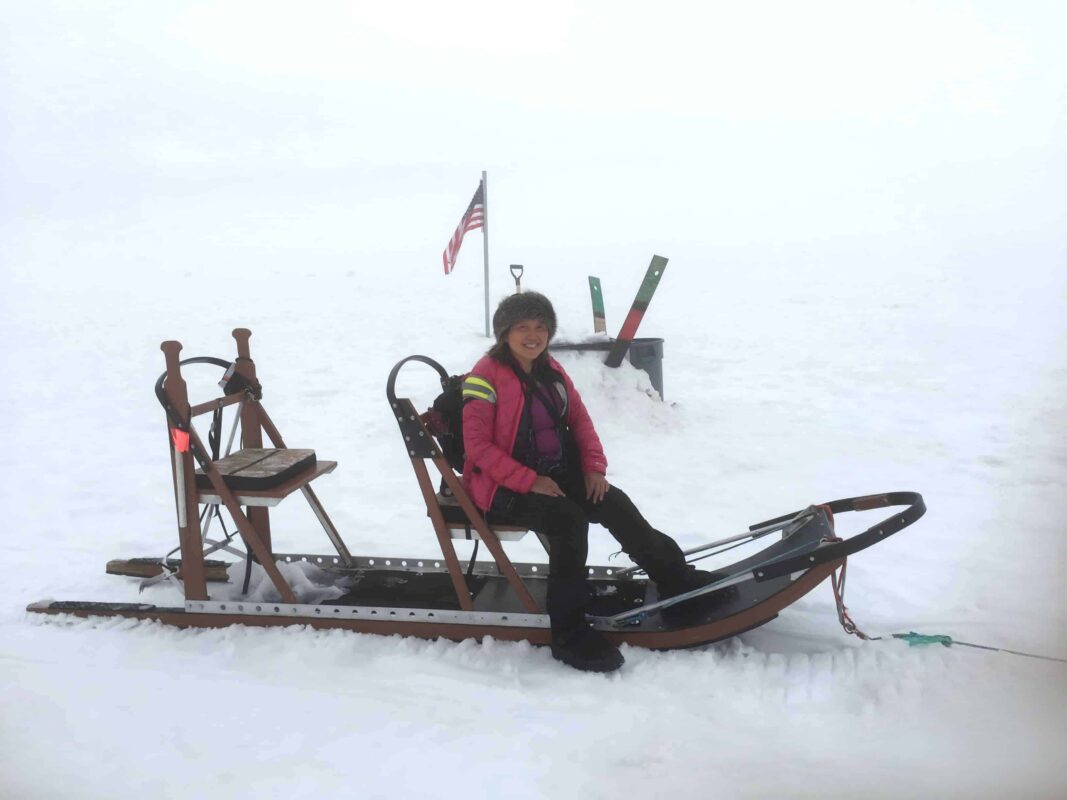
Life should not be a journey to the grave with the intention of arriving safely in a pretty and well preserved body, but rather to skid in broadside in a cloud of smoke, thoroughly used up, totally worn out, and loudly proclaiming “Wow! What a Ride!”
– Hunter S. Thompson
Whether you’re seeking modern elegance Abstract art or timeless charm of black and white photography, Dr Zenaidy Castro’s diverse range of art and photographic prints and artpieces ensures you find the perfect match for your unique vision. Explore our abstract art and photographic collection and see how our artworks and photographs can transform your establishment into a visual masterpiece.
Get to Know the Creative Force Behind the Gallery
About the Artist ➤ “Step into the world of Dr. Zenaidy Castro — where vision and passion breathe life into every masterpiece”
Dr Zenaidy Castro’s Poetry ➤ "Tender verses celebrating the bond between humans and their beloved pets”
Creative Evolution ➤ “The art of healing smiles — where science meets compassion and craft”
The Globetrotting Dentist & photographer ➤ “From spark to masterpiece — the unfolding journey of artistic transformation”
Blog ➤ “Stories, insights, and inspirations — a journey through art, life, and creative musings”
As a Pet mum and Creation of Pet Legacy ➤ “Honoring the silent companions — a timeless tribute to furry souls and their gentle spirits”
Pet Poem ➤ “Words woven from the heart — poetry that dances with the whispers of the soul”
As a Dentist ➤ “Adventures in healing and capturing beauty — a life lived between smiles and lenses”
Cosmetic Dentistry ➤ “Sculpting confidence with every smile — artistry in dental elegance”
Founder of Vogue Smiles Melbourne ➤ “Where glamour meets precision — crafting smiles worthy of the spotlight”
Unveil the Story Behind Heart & Soul Whisperer
The Making of HSW ➤ “Journey into the heart’s creation — where vision, spirit, and artistry converge to birth a masterpiece”
The Muse ➤ “The whispering spark that ignites creation — inspiration drawn from the unseen and the divine”
The Sacred Evolution of Art Gallery ➤ “A spiritual voyage of growth and transformation — art that transcends time and space”
Unique Art Gallery ➤ “A sanctuary of rare visions — where each piece tells a story unlike any other”
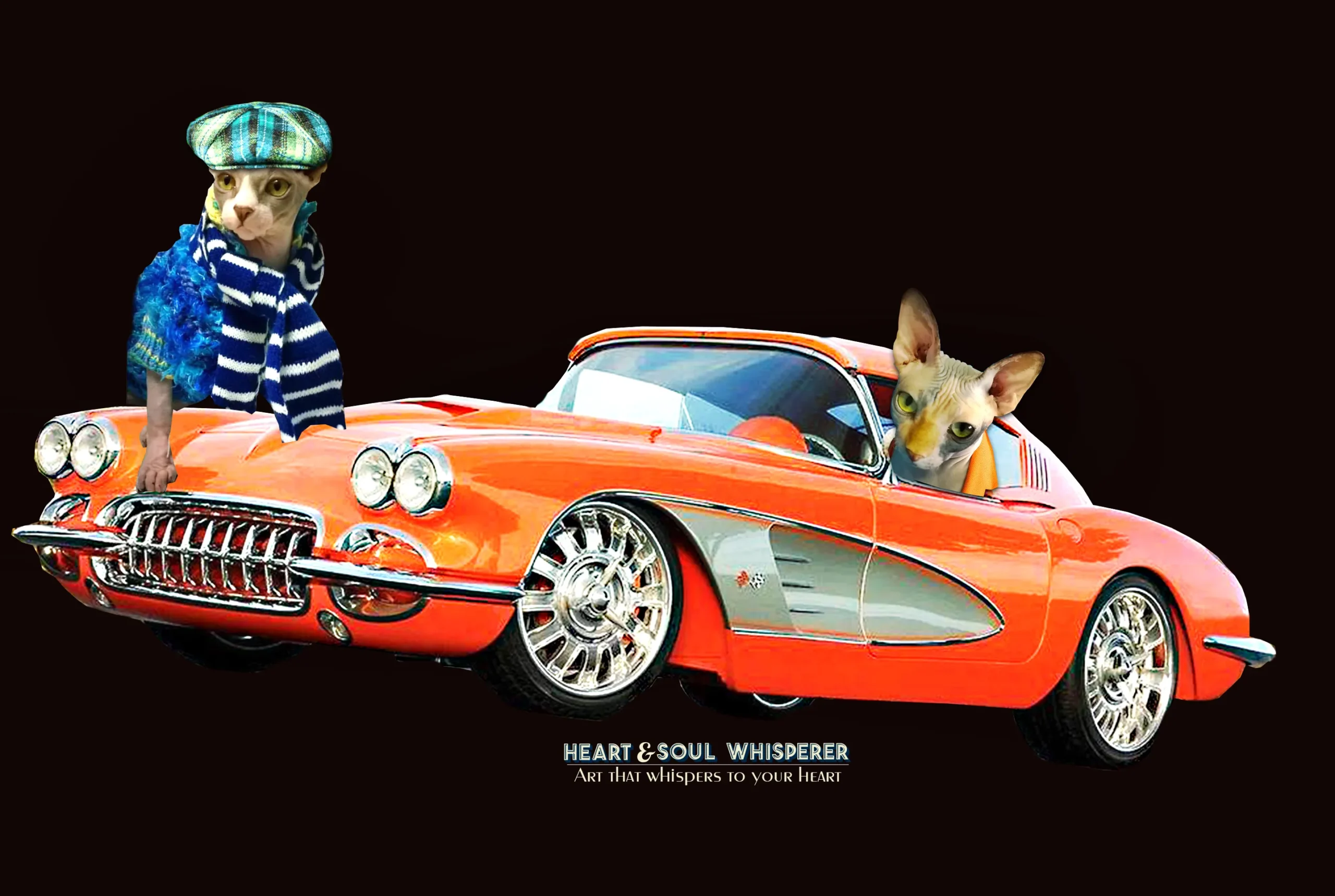
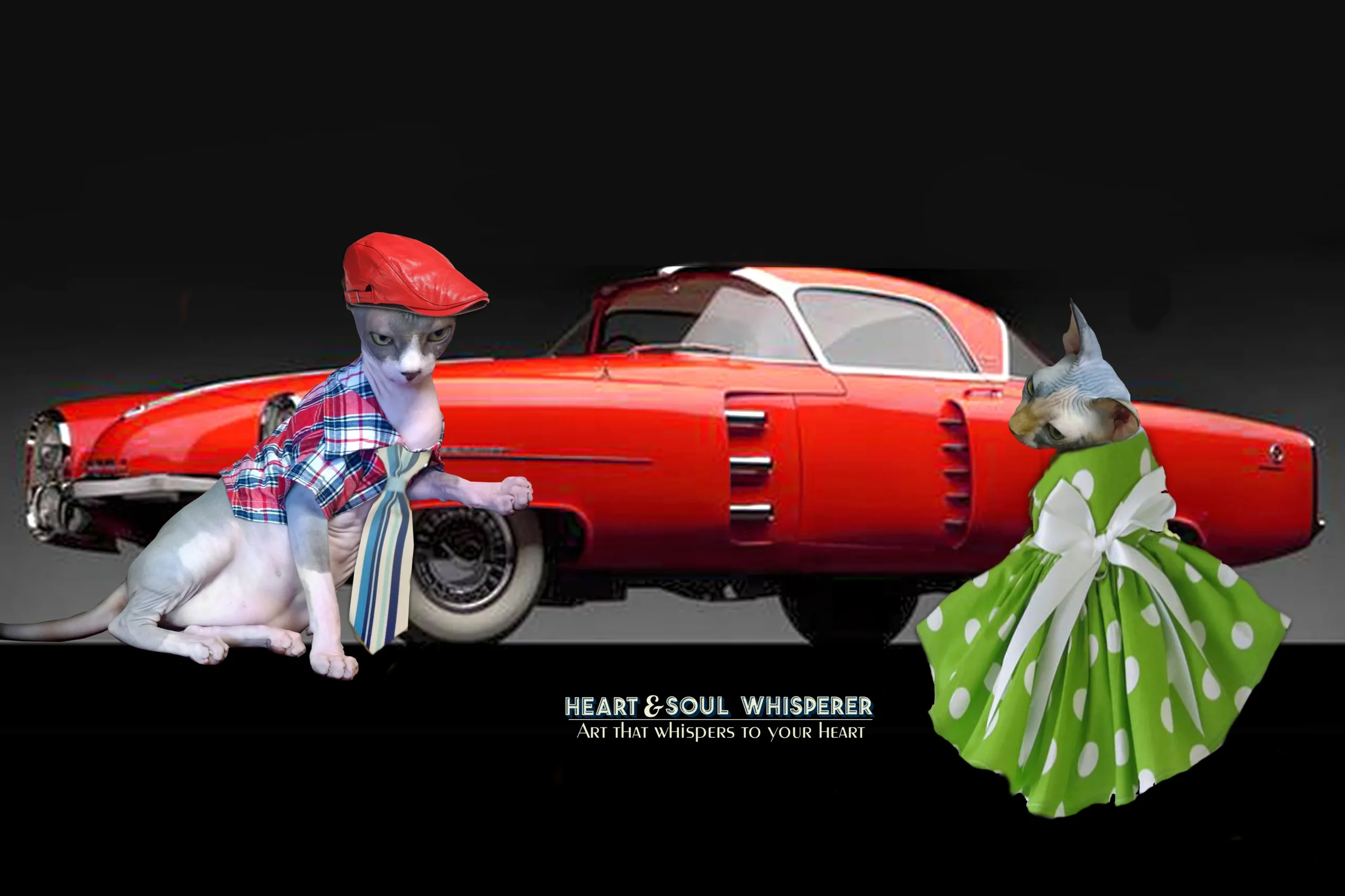
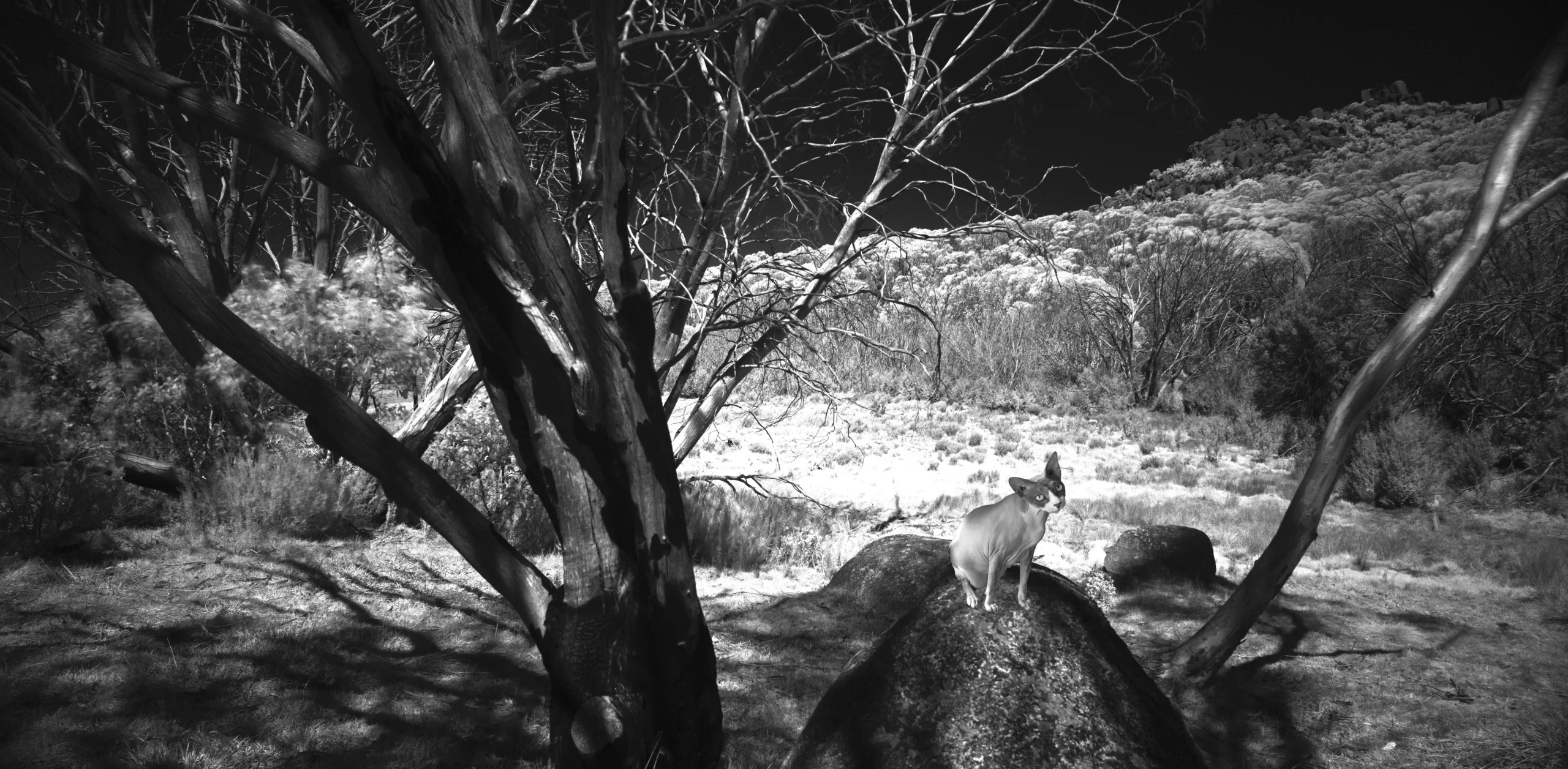
═══════════════════════════════════════════════════
At Heart & Soul Whisperer Art Gallery, every coloured and black and white photograph tells a story beyond sight—an emotional journey captured in light, shadow, and soul. Founded by visionary artist Dr Zenaidy Castro, our curated collections—spanning landscapes, waterscapes, abstract art, and more—offer a timeless elegance that transcends fleeting trends. Whether enriching private residences, corporate offices, healthcare facilities, hospitals, or hospitality spaces, our artworks are designed to transform environments into sanctuaries of memory, beauty, and enduring inspiration. Let your walls whisper stories that linger—reflections of art, spirit, and the love that connects us all.
Whispers in Monochrome — The Artist’s Signature Collection
Limited Editions ➤ “Treasures of Time, Rare Whispers on Canvas — Art as Unique as Your Soul”
Infrared ➤ “Beyond the Visible: Worlds Revealed in Fiery Hues and Hidden Radiance”
Vintage & Retro ➤ “Echoes of Elegance, Timeless Stories Wrapped in Nostalgic Light”
Film Emulation Photography ➤ “Where Grain Meets Grace — Classic Souls Captured in Modern Frames”
Minimalism ➤ “Pure Essence, Quiet Power — Beauty Found in the Art of Less”
Chiaroscuro Landscapes ➤ “Light and Shadow’s Dance: Landscapes Painted in Dramatic Contrast”
Moody Landscapes ➤ “Whispers of Storm and Silence — Nature’s Emotions in Every Frame”
Mystical Landscapes ➤ “Enchanted Realms Where Spirit Meets Horizon, Dream and Reality Blur”
Moody and Mystical ➤ “A Symphony of Shadows and Spirit — Landscapes That Speak to the Soul”
Discover the Vibrance of Landscapes and Waterscapes
Country & Rural ➤ “Sun-kissed fields and quiet homesteads — where earth and heart meet in vibrant harmony”
Mountain ➤ “Majestic peaks bathed in golden light — nature’s grandeur painted in every hue”
Trees & Woodlands ➤ “Whispers of leaves and dappled sunlight — a living tapestry of green and gold”
At The Water’s Edge ➤ “Ripples of color dance on tranquil shores — where land and liquid embrace in serene beauty”
Ethereal Landscapes and Waterscapes in Monochrome
Country & Rural Landscapes ➤ “Monochrome whispers of earth and toil — the quiet poetry of open lands”
Australian Rural Landscapes ➤ “Shadowed vistas of sunburnt soil — raw beauty in timeless contrast”
The Simple Life - Country Living ➤ “Essence distilled — moments of calm in stark black and white”
Cabin Life & shacks ➤ “Silent shelters bathed in light and shadow — stories carved in wood and time”
Mountain Landscapes ➤ “Peaks etched in silver and shadow — grandeur carved by nature’s hand”
Trees & Woodlands ➤ “Branches weaving tales in shades of gray — forests alive in monochrome breath”
At The Water’s Edge ➤ “Edges where light and dark meet — reflections of stillness and flow”
Lakes & Rivers ➤ “Flowing grace captured in stark clarity — water’s endless journey in shades of gray”
Waterfalls ➤ “Cascades frozen in black and white — movement captured in eternal pause”
Beach, Coastal & Seascapes ➤ “Silent shores and textured tides — nature’s drama in monochrome waves”
Reflections ➤ “Mirrored worlds in shades of shadow — where reality blurs into dream”
Snowscapes ➤ “White silence pierced by shadow — frozen landscapes of quiet wonder”
Desert & The Outback ➤ “Vastness distilled into contrast — endless horizons in black and white”
A Journey Through Curated Beauty
Black and White Photography ➤ “Timeless tales told in shadow and light — where every tone speaks a silent story”
Colour Photography ➤ “A vivid symphony of hues — life captured in its most radiant form”
Abstract Art & Abstracted Labdscapes ➤ “Beyond form and figure — emotions and visions woven into pure expression”
Digital Artworks ➤ “Where imagination meets technology — digital dreams crafted with artistic soul”
People ➤ “Portraits of the human spirit — stories told through eyes, expressions, and silent moments”
═══════════════════════════════════════════════════
Tag: Travel destination, Travel stories, Travel Blog, Cultural travel, Travel Guide, Adventure Travel, Nature Travel, Street Photography, Wanderlust, Travel Photography, Adventure, World Traveler, Globetrotter, Travel Life, Explore The World


